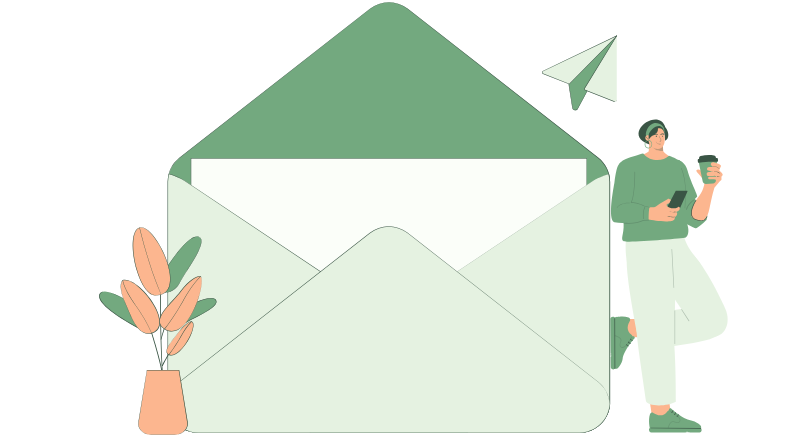The Ultimate Guide to Growing Your Email List in 2025

Email marketing is still one of the highest-ROI digital marketing channels, but growing a high-quality list in 2025 requires more than just a simple sign-up form. Consumer expectations have changed, privacy regulations have evolved, and inboxes are more competitive than ever. So, how do you grow an engaged email list that actually drives revenue?...
Let’s get into it!
1. Value-Driven Lead Magnets: It’s More Than Just a PDF
The traditional PDF guide as a lead magnet still works… but today’s consumers expect more. Interactive, personalized, and high-value offers are the new standard. Let me explain by giving you a couple examples:
Example 1: skincare company Deciem offers a range of products for customers with different skincare needs and uses their Regimen Builder to capture email subscriptions AND valuable info about their customers preferences. They use this to send follow up emails that are personalized based on that. It’s a highly engaging approach that makes every customer feel heard when you can speak to their specific needs.
Example 2: Duolingo offers a free placement test to assess language skills before recommending a personalized learning plan. This approach not only captures email addresses but also creates an engaging first experience that drives retention.
What Works in 2025?
- Personalized quizzes & assessments (e.g., "Which skincare routine is best for your skin type?")
- Exclusive live webinars with industry experts
- AI-driven product recommendation tools (like Sephora’s shade-matching tech for cosmetics)
- Private communities or membership access for subscribers only
💡 Pro Tip: The more interactive and relevant your lead magnet, the higher your opt-in rates.
2. Zero-Click Content to Capture Emails Directly
Zero-click content is content that delivers immediate value without requiring users to leave a platform. Platforms like Google, LinkedIn, and Instagram are prioritizing content that keeps users engaged in-app, so your strategy needs to adapt. The idea here is that you can get subscriptions by using LinkedIn carousels and Twitter threads to share bite-sized insights, then inviting users to sign up for deeper analysis towards the end of the content, allowing a one-click subscription option without leaving the platform.
What Works in 2025?
- LinkedIn posts with direct opt-in links to newsletters
- TikTok video CTAs with a "DM for access" prompt (then using chat automation to collect emails)
- Twitter/X threads with engaging insights, ending with a lead magnet link.
💡 Pro Tip: Make the sign-up process seamless by using autofill forms, SMS-to-email opt-ins, or embedded forms that don’t require extra clicks.
3. AI-Powered Personalization in Sign-Up Funnels
Consumers expect personalized experiences, and AI is making it easier than ever to customize opt-in journeys based on behavior and preferences.
What Works in 2025?
- Dynamic pop-ups that change based on browsing behavior. For example, using AI-driven exit-intent pop-ups that dynamically changed based on user behavior. If a user browsed sneakers, the pop-up offered "10% off your first sneaker order."
- Chatbots that collect emails via interactive conversations
- AI-generated subject line testing to maximize open rates after sign-up
- Predictive analytics to segment new subscribers based on intent
💡 Pro Tip: AI tools like OptinMonster, Drift, and Klaviyo can help automate and optimize your email collection process.
4. Leveraging Referral & Viral Loops
People trust recommendations from friends more than ads. A well-structured referral program can turn subscribers into list-building machines.
🔹 Example: Dropbox grew 3900% in just 15 months with an incentivized referral program where both referrer and referee both got awarded with an offer.
What Works in 2025?
- Gamified referral programs with tiered rewards (1 referral = free eBook, 5 referrals = VIP content, etc.)
- “Unlock exclusive content” loops where readers must refer a friend to access a premium guide
- Influencer & micro-affiliate partnerships to drive targeted sign-ups
- Friend-based giveaways ("Enter to win - double your chances by referring a friend!")
💡 Pro Tip: Use referral tools like SparkLoop, UpViral, and Viral Loops to automate tracking and reward distribution.
5. Privacy-First Strategies & First-Party Data Collection
Now this point is nothing new but worth mentioning. Evolving data privacy laws (GDPR, CCPA, and Google’s phase-out of third-party cookies), brands must shift toward ethical, transparent list-building tactics. And I’m sure this goes without saying… but no more buying email lists!!! Make sure you’re optimizing your site and channels for capturing opt-ins from your customers and followers. If you run an Ecommerce store, checkout this guide by OptiMonk on proven strategies for collecting emails.
What Works in 2025?
- Email capture at checkout with personalized incentives
- Preference-based sign-up forms (letting users choose email frequency and topics)
- First-party retargeting (capturing emails through in-store QR codes, SMS, or app opt-ins)
- Ethical data transparency, clearly showing how subscriber data is used
💡 Pro Tip: Consumers are more likely to share their email if they trust your brand. Be upfront about privacy policies and give them control over their data.
Final Thoughts: The Future of Email List Growth
Growing your email list in 2025 isn’t just about collecting emails, it’s about building high-quality, engaged audiences who actually want to hear from you. The more you can tailor your emails to your audience up-front, the more likely they are to stay on your list.
💡 Key Takeaways:
✅ Value-driven lead magnets outperform generic freebies.
✅ Zero-click content captures attention without needing a website visit.
✅ AI-driven personalization boosts opt-ins by making sign-up experiences seamless.
✅ Referral programs create viral loops that fuel organic growth.
✅ First-party data collection ensures compliance and long-term trust.
Any strategies I missed?

